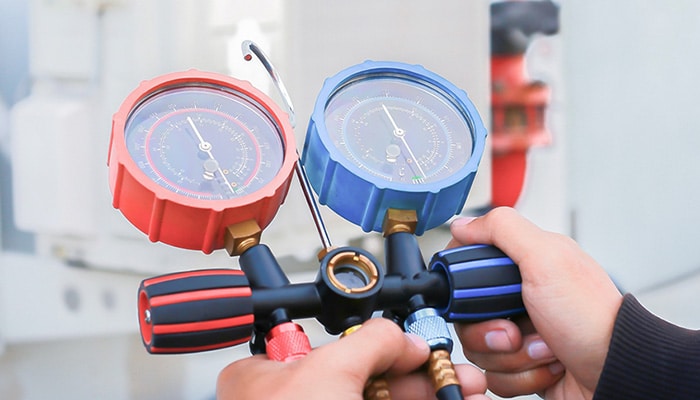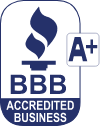
New Refrigerant Regulations - 2025
At Comfort Pros, we're always looking ahead to ensure our customers in Cary and Holly Springs, NC, have the most up-to-date information about their HVAC systems. Today, we want to talk about a significant change coming to our industry: the transition from R410a refrigerant to new alternatives, specifically R32 and R454b. These new refrigerant regulations will affect many homes and businesses in our community, potentially impacting the efficiency and environmental footprint of your cooling systems.
Learn More About the Upcoming Changeover to R32 & R454b Refrigerants
We understand that changes like these can seem complex and maybe even a bit overwhelming. That's why we're here to break it down for you in simple terms. Whether you're wondering about the environmental impact, the pros and cons of these new refrigerants, or what actions you might need to take, we've got you covered.
Remember, our team at Comfort Pros is always here to answer your questions and guide you through this transition. Drop us a message online or call 919-887-8889 anytime!
Here's Albert with Comfort Pro Discussing The Transition:
Why Are R32 & R454b Replacing R410a?
The move away from R410a isn't happening on a whim. It's part of a global effort to reduce the environmental impact of refrigerants used in air conditioning and refrigeration systems. While R410a was a step up from its predecessors, it still has a relatively high Global Warming Potential (GWP). This means that if it escapes into the atmosphere, it contributes significantly to climate change.
To put this into perspective, R410a has a GWP of 2088. This means it's 2088 times more potent as a greenhouse gas than carbon dioxide over a 100-year period. Now, let's look at the alternatives:
- R32 has a GWP of 675, which is about one-third that of R410a.
- R454b has an even lower GWP of 466.
By switching to these alternatives, we can dramatically reduce the potential environmental impact of refrigerant leaks. This change is part of a broader initiative to make HVAC systems more environmentally friendly and energy-efficient.
R32 - The Pros & Cons
R32 has been used in Europe and other parts of the world for several years now, giving us a good understanding of its performance and characteristics. Let's explore some of its advantages and disadvantages.
Pros of R32
- Lower Environmental Impact: As mentioned earlier, R32 has a much lower GWP than R410a, making it significantly better for the environment.
- Higher Efficiency: R32 is more energy-efficient than R410a. This means that systems using R32 can potentially provide better cooling while using less energy, which could lead to lower electricity bills.
- Lower Refrigerant Charge: Systems using R32 typically require less refrigerant to operate effectively. This not only reduces the potential environmental impact but can also make systems more compact.
Cons of R32
- Mild Flammability: R32 is classified as a mildly flammable refrigerant (A2L). While this doesn't pose a significant risk in properly designed and installed systems, it does require some additional safety considerations.
- Higher Discharge Temperatures: R32 systems tend to run at higher temperatures than R410a systems. This can potentially impact compressor longevity if not properly managed.
- Incompatibility with Existing Systems: R32 cannot be used as a drop-in replacement for R410a in existing systems. This means that transitioning to R32 will require new equipment in most cases.
R454b - The Pros & Cons
R454b is a newer refrigerant blend that's being positioned as another alternative to R410a. While it doesn't have the same track record as R32, it offers some interesting characteristics.
Pros of R454b
- Very Low GWP: With a GWP of 466, R454b has an even lower environmental impact than R32.
- Similar Performance to R410a: R454b behaves very similarly to R410a, which could make the transition easier for manufacturers and technicians.
- Lower Compressor Discharge Temperature: Compared to R32, R454b runs at lower temperatures, which could be beneficial for compressor longevity.
Cons of R454b
- Limited Real-World Experience: As a newer refrigerant, there's less long-term data on R454b's performance and potential issues in real-world applications.
- Mild Flammability: Like R32, R454b is also classified as mildly flammable (A2L), requiring similar safety considerations.
- Refrigerant Glide: As a blend, R454b experiences temperature glide during phase changes, which can complicate system design and maintenance.
What Does This Mean For Your Home?
- Check Your Current System: First, identify what refrigerant your current HVAC system uses. If it's R410a, you're likely to be affected by this change in the coming years.
- Consider System Modification: In some cases, it may be possible to modify your existing system to use one of the new refrigerants. However, this is often not practical or cost-effective. We can assess your system and provide recommendations.
- Plan For Upgrade: If your system is older or uses R410a, now might be a good time to consider upgrading to a new system that's compatible with R32 or R454b. This could improve your energy efficiency and prepare you for the future.
- Consider An Early Upgrade: All units manufactured after January 1st, 2025 will need to use the new refrigerants - and they're likely to be more expensive. You can save some money in the short-term by upgrading your system now, even though the price of R410a will likely go up in the future as supplies dwindle.
- Regular Maintenance: Regardless of your refrigerant type, regular maintenance can help prevent leaks and ensure your system is running efficiently.
- Stay Informed: Keep up with the latest developments in this transition. We'll continue to provide updates and information to help you make informed decisions.
Stick With The Pros To Ease You Through The Transition
The shift from R410a to alternatives like R32 and R454b represents a significant change in the HVAC industry. While it may seem daunting, this transition is ultimately about creating more environmentally friendly and efficient cooling solutions for our homes and businesses. At Comfort Pros, we prefer to work with R32 because of it's proven track record, but we're also here to help you find what's best for your home.
To recap:
- R410a is being phased out due to its high Global Warming Potential.
- R32 and R454b are leading alternatives, each with their own pros and cons.
- R32 offers high efficiency but requires new safety considerations.
- R454b has an even lower environmental impact but is less tried and tested.
- As a homeowner, you can prepare by understanding your current system and planning for future upgrades.
At Comfort Pros, we're committed to guiding our customers in Cary and Holly Springs through this transition. As We're here to answer your questions, provide expert advice, and ensure your HVAC system is ready for the future. Whether you're considering an upgrade, need maintenance on your current system, or just want to learn more about these changes, don't hesitate to reach out. Send us a message online or call 919-887-8889 . Together, we can ensure your home stays comfortable while also doing our part for the environment.






